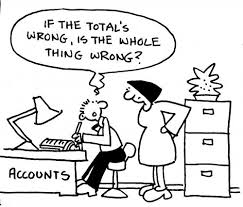Back-testing is an important routine to see if the basic premise of the strategy works as expected, which is, to produce a desired and profitable net result. However, most traders aren't so enthusiastic or even skeptical to perform back-testing because most often they get a different trade outcome when trading in the live market.
But, back-testing can produce dependable results. The caveat is that back-testing has to be run properly to reveal if the strategy can be profitable so that you can confidently start trading with your money.
Here are simple steps you can follow today to make back-testing a powerful and reliable tool to achieve your trading goals.
1. Don’t introduce errors

This is a common mistake typically introduced with manual back-testing where a trader ignores some strategy rules (entry, exits and take-profit) just to record more winning trades.
At hindsight, if the price has moved positively, the trader tends to ignore few entry or exit rules and record its winning even though the strategy would not have executed the supposed trades in real time. Introducing hindsight bias is a major factor in corrupting and often overestimate a back-tested performance.
2. Not having enough info

This is also a very common problem. Just watching one or two examples on how a certain price action had played out or a specific pattern was seen repeating previously on a chart is not a sure thing that will repeat itself in the next. Basically, you are solely making big judgment on far too few data points!
What you need to see whether that pattern or price action can repeat itself more often. On a minimum, you would need between 20 and 50 of data points to make a good calculated call, and not just based on a couple of examples.
3. Don’t take the shortcut

Forward-testing is mostly neglected because it takes quite a big chunk of time and honestly, forward-testing is tedious.
Skipping forward-test is just asking for trouble. Just like in back-test, on a minimum, you need to gather about 30 data points. Forward testing can reveal if the strategy can still maintain a certain level of performance observed outside your back-tested periods.
4. Review both back-test and forward-test results

This is also often skipped and is the mother of all failures. The performance result in forward testing has to correlate as much as with back-tested results.
When you see a noticeable difference in forward-test performance on your EA or strategy, it is likely the back-testing strategy rules were inadequate or have flaws. It is now time to investigate whether errors (due to data/market bias or curve-fitting) were introduced earlier, which is often the case.
Make refinements to the strategy to align the back-tested and forward-tested results as much as possible.
Final thoughts
Applying some of these simple rules would start to transform how you test and assess your trade strategy or system with greater accuracy. To know more, please read my trading strategy development books.
I have written 3 books to show on how you can develop and test a strategy easily and quickly using my 10/20/30 Rule™.
The 10/20/30 Rule™ guides you through the process of back-testing, strategy optimization and forward-testing stages with ease. Now, anyone, whether a novice or experienced trader, can quickly and accurately assess and bring out the full potential of a trading idea or system without the complex computation or simulations associated with systems building.
I have eliminated many irrelevant performance metrics we often see in the strategy testing software and focus on the very few, but key metrics that are used to accurately assess and build your next winning trading system.
About the Author
Ramesh is an active trader producing over 200% gain in 2017 and author of 3 trade strategy development books sold on Amazon. He is the creator the10/20/30 Rule™ that could transform a mediocre trading system to become a top performer by following a systematic and thoughtful approach on strategy development.
website: www.forexnewrulebook.net



